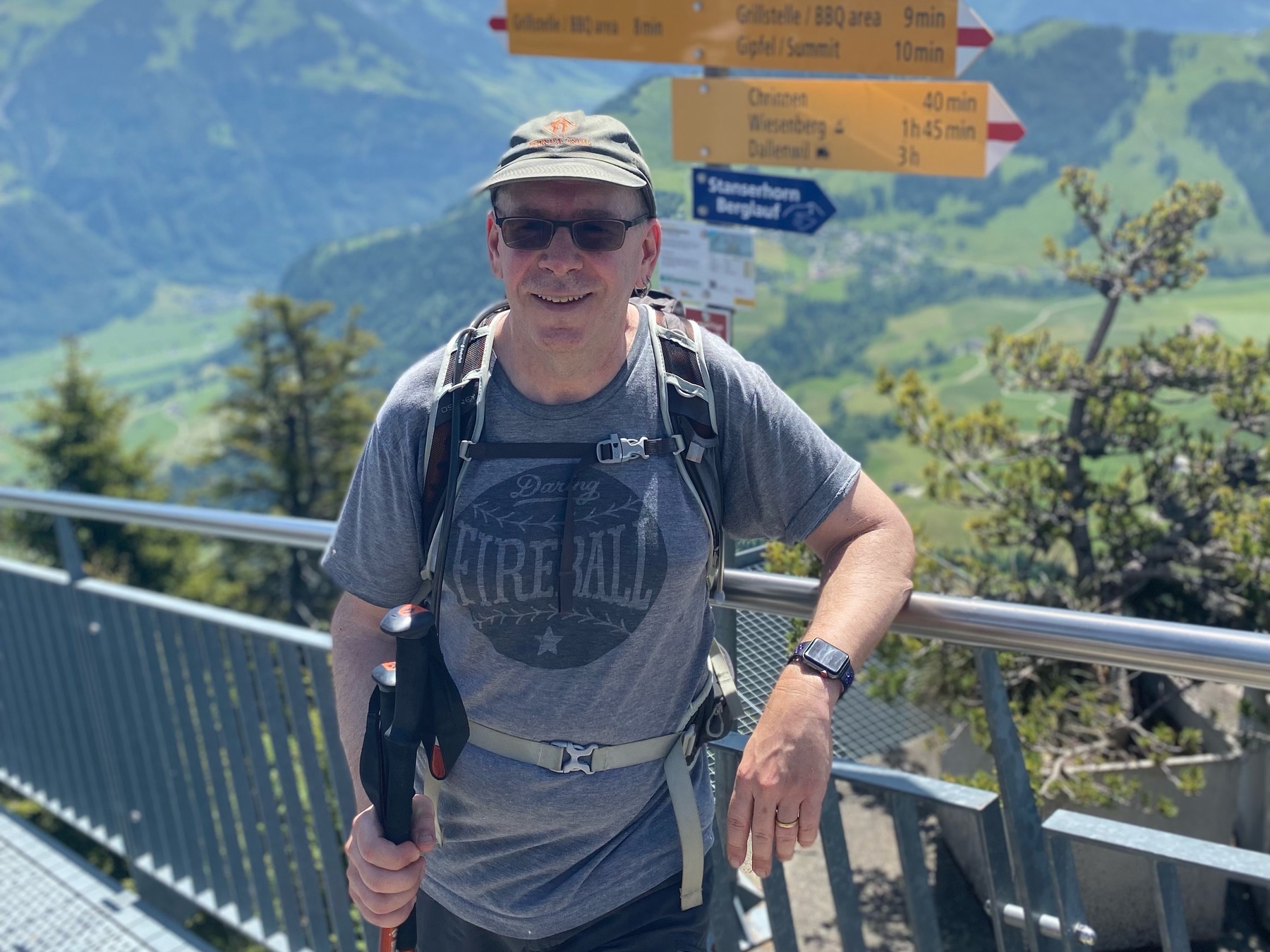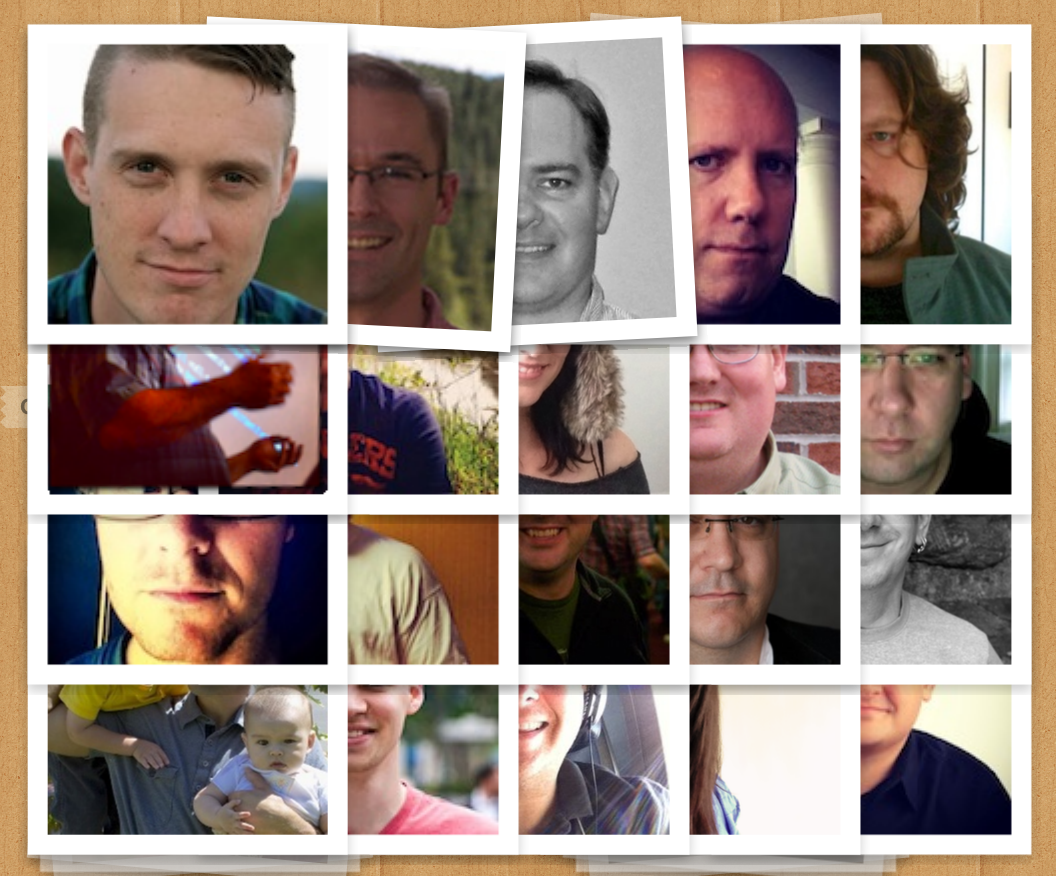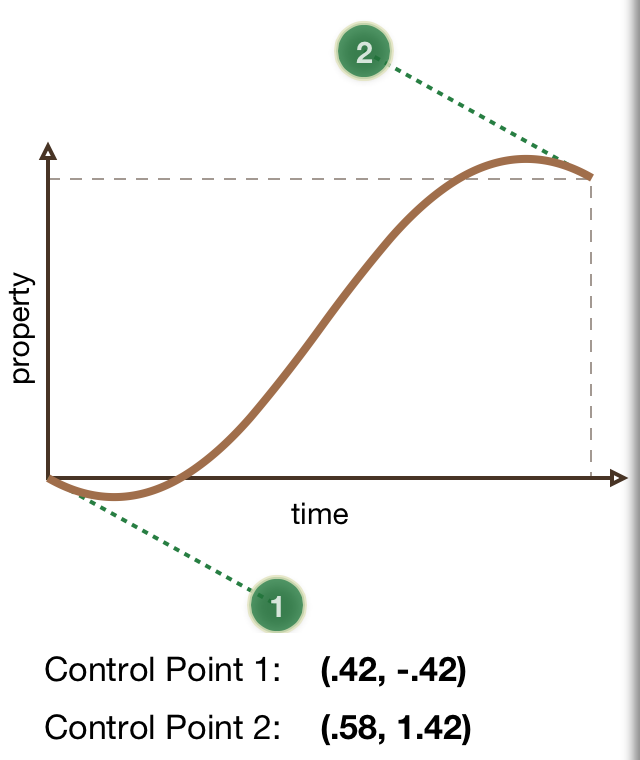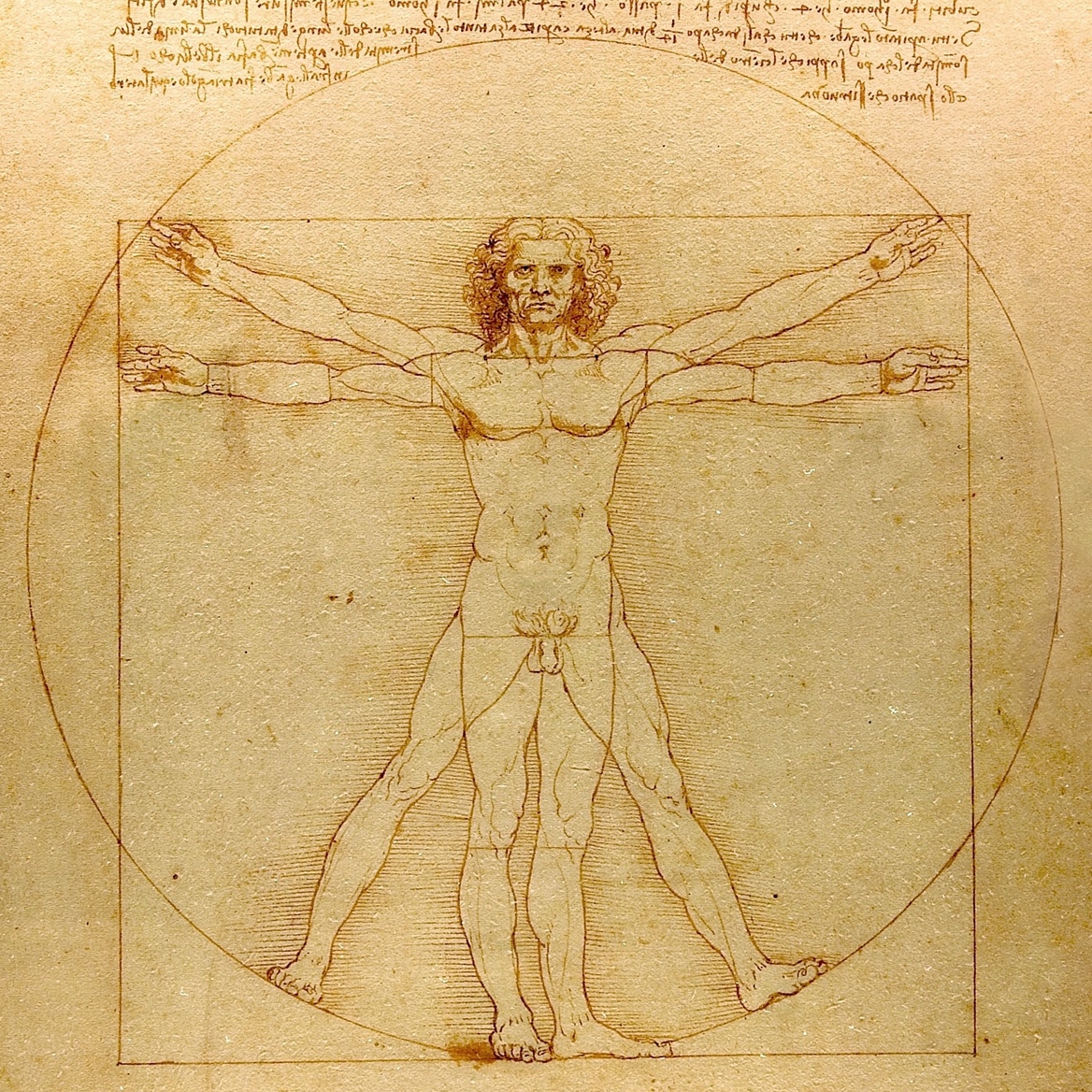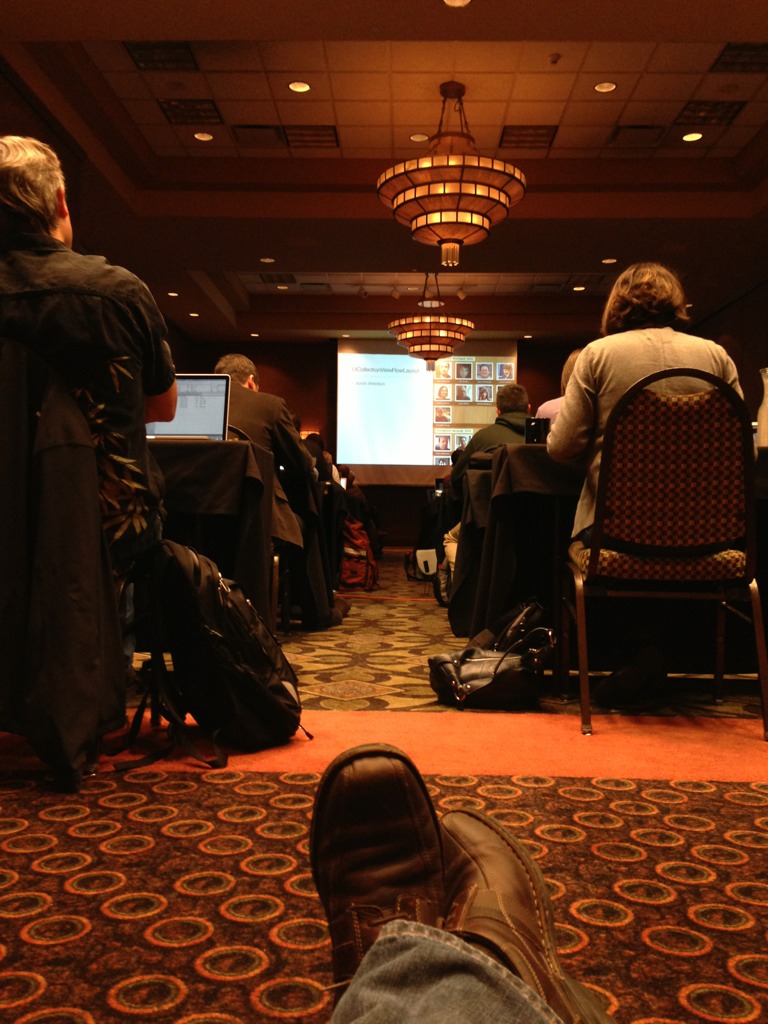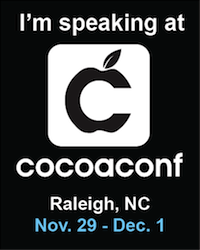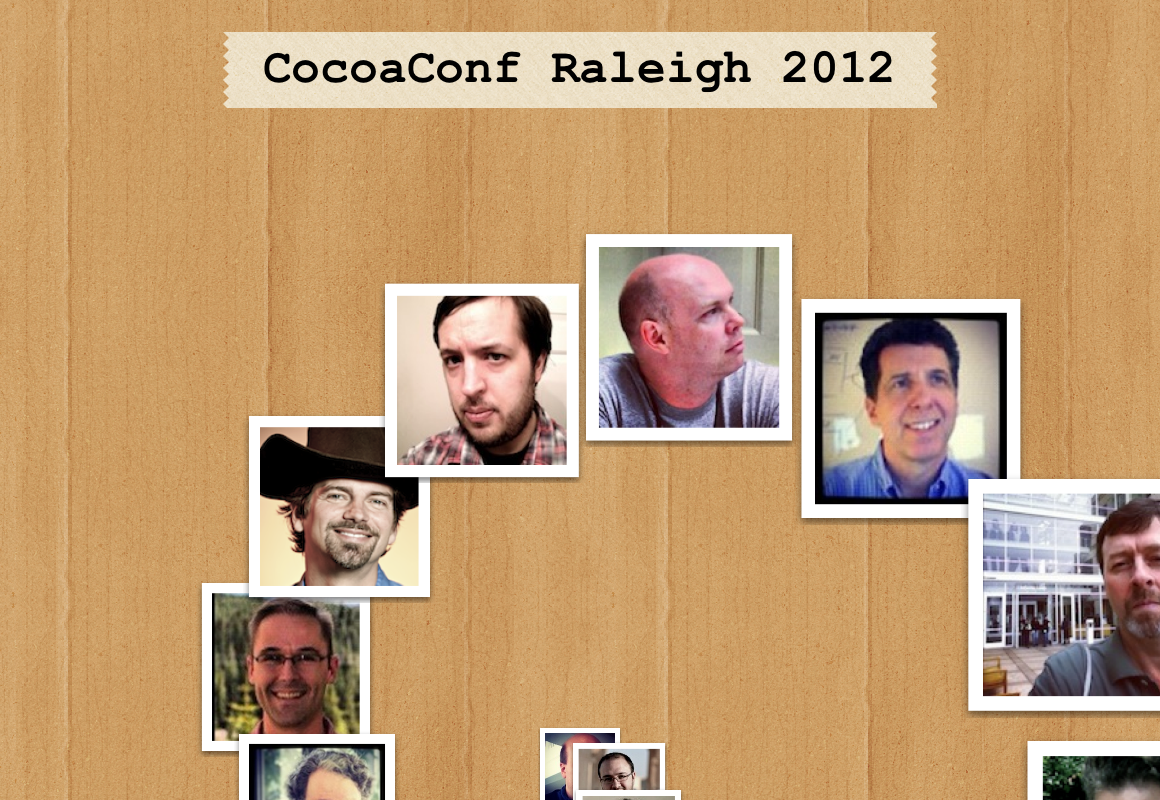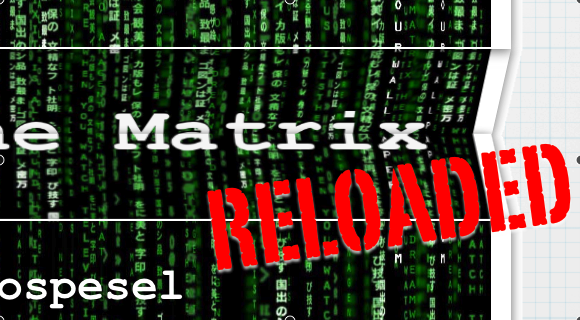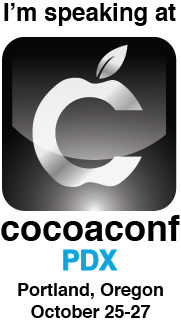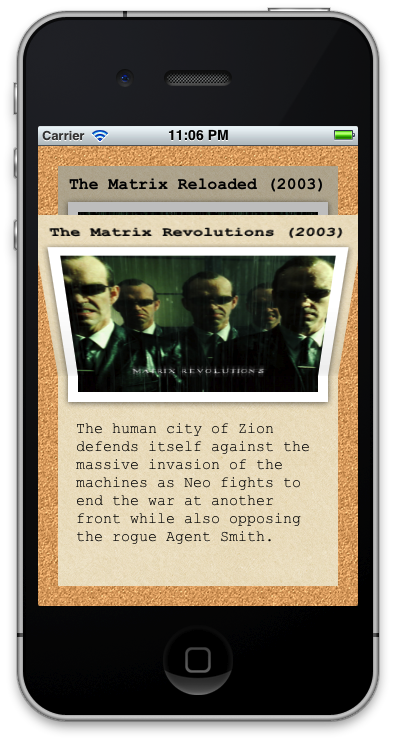I want to present a few tips I have for presenting at technical conferences, specifically at iOS / Mac-focused technical conferences. This isn’t going to be a list of tips on speaking — you can go to Toastmasters for that — just a few things I’ve picked up or think are important.
Have your slides and code posted online by the start of your session
They have to be ready by then anyway, right? Right? So take a few extra minutes to make sure they’re uploaded someplace where they can be shared whether that’s GitHub, DropBox, or your website. There are plenty of free options available, so there are no excuses. How many times have you heard during a session, “I’ll post the slides/code soon” and then how often do you remember to go back and check later to download them?
Bring a few thumb drives with your slides/code on them
Many times conference WiFi is slow, flaky, or nonexistent. Having your materials available online doesn’t necessarily help if your attendees can’t access them immediately. Small capacity flash drives are super cheap nowadays, so buy a few and take a few minutes to copy over your slides and code just before the talk (you know, just after you finish finalizing them). Attach ribbons or spray-paint them hot pink to help keep track of them.
Bring all your converters, adapters, cables, and chargers
Bring more than you think you’ll need. If the conference projector is VGA, then you’ll definitely want your mini DisplayPort to VGA adapter, but you should also bring your other adapters and maybe an HDMI cable just in case. And if you’re running any iOS apps and have either an iPhone 4S or an iPad 2 or newer, then bring adapters (VGA and/or HDMI) so that you can project directly from the device via AirPlay Mirroring if necessary. (You never know when Xcode might refuse to run your code in the Simulator.) The Apple Digital AV Adapter (HDMI) is especially useful as the only one that lets your do video out from your iOS device simultaneously while debugging or running Instruments from your MacBook over USB, so bring a USB sync cable too. It goes without saying that you should have chargers for your MacBook and iOS devices as well.
Bonus tip: If you use a retina MacBook Pro or a new 2012 MacBook Air to present, remember to pack a MagSafe to MagSafe 2 converter so that you can charge your laptop using the power adapter that’s hopefully installed on the podium.
Have Contingency Plans
If your session relies on live-coding and/or executing sample code from Xcode, what will happen if Xcode refuses to cooperate with you? Do you have the code already compiled on an iOS device (possibly multiple) and the cables necessary to present from it? Do you have git branches or tags for all the major stages of your live-coding demo? If all else fails, do you have slides showing screenshots of what would have happened? Expect the unexpected and you will recover more quickly and gracefully when it inevitably happens.
Rev Your Talk
In an ideal world, every conference presentation would be a new original talk crafted specifically for that conference session. But in reality, good presentations are incredibly time-intensive to create and this just isn’t possible. I’ve been trying to debut 1 new talk for each conference, but even that may not be sustainable long-term. Also, some talks are great and should be shared widely with different audiences, so in that sense, repeating them is perfectly acceptable.
However, you should still rev your talk with each presentation:
- Review your slides and update / correct them as necessary.
- Fix a bug or add a feature to your sample code.
- Make a change based on feedback from the previous rendition of your talk.
- Imagine that someone in your audience attended the previous version of your talk and ask yourself, “What new tidbit of knowledge will I include this time that she didn’t get last time?”
- And run through your talk at least once, even if you’ve already given it a half dozen times before.
In Closing
Essentially all of the above tips are corollaries derived from the following 2 axioms:
- Be Prepared
- Respect Your Attendees and Value Their Time
As a presenter you have an obligation to provide value to your attendees. In exchange for presenting you are receiving entry to the conference, probably accommodation, and possibly airfare and maybe even a speaker’s fee. But more importantly you will be receiving recognition from your peers and a platform from which to promote yourself, your book, your app, your company, etc. I know you’re busy with your day job, the next great app, your next book or a demanding high-profile consulting client. So is everybody else. You owe it to your audience to put in a modicum of effort (and preferably much more) into each conference appearance.
I encourage you to share your domain-specific knowledge and areas of expertise with the community, and I look forward to seeing you at a tech conference soon.

